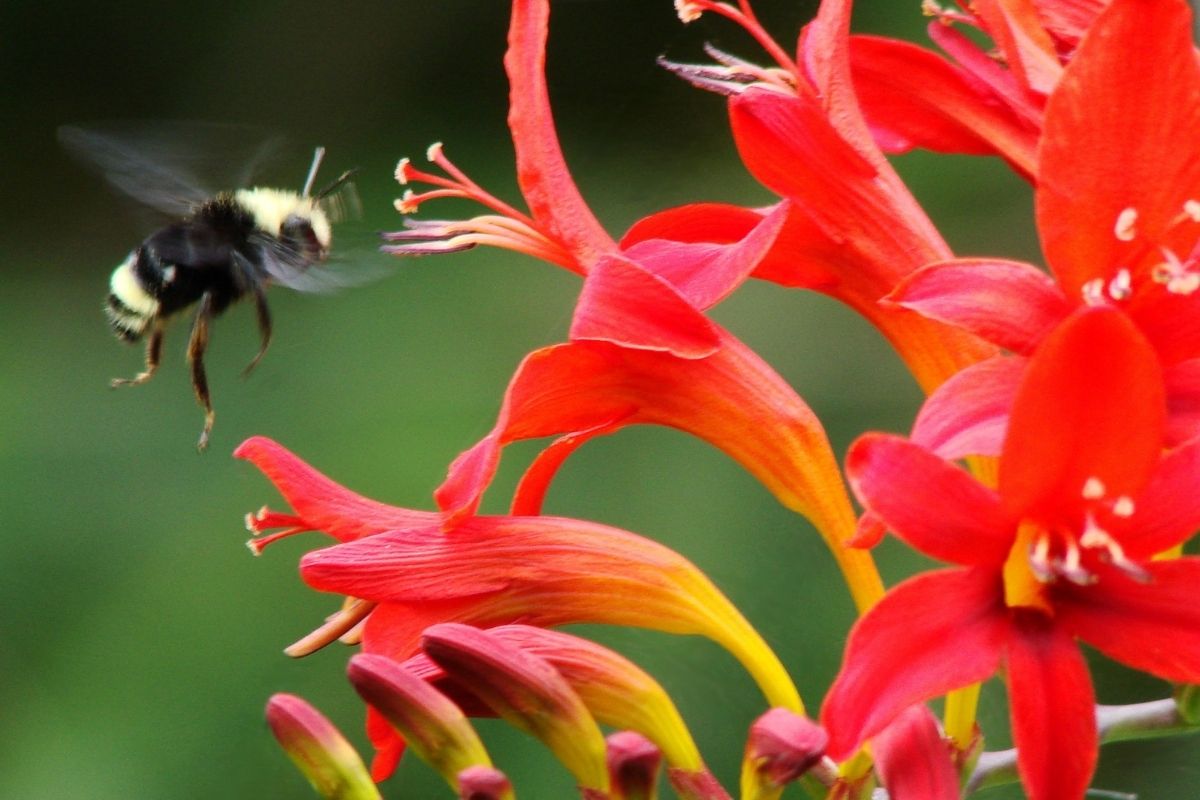
Feeding the Pollinators
Pollinators carry and move pollen among flowers, and visits by multiple pollinators results in successful pollination, which means lots of healthy fruit and vegetables from the garden.
We love pollination and pollinators.
Without them, our gardens and crops wouldn’t be as abundant. Did you know that 75% of all flowering plants rely on over 200,000 species of animal and insect pollinators? Hummingbirds, bats, and other small mammals account for approximately 1,000 of these species, and the rest are insects such as bees, butterflies, moths and more…
Pollinators continue to struggle with loss of diverse habitat, undernourishment, disease, and climate change. We’re highlighting a few perennials that can help support and nourish our pollinators. Planting just one or two of these perennials into your garden can help support and sustain them in your environment.
Have a pet friendly garden? You’ll be delighted to know that these selections are also safe for dogs, and your dog plays an important role in the garden. Their activity can lift pollen, which can land on nearby plants and pollination can occur this way. Pollen can also cling to their coats until it is brushed off on another plant. Woof!
Geranium ‘Rozanne’
Hardy Geraniums or Cranesbill are robust and vigorous perennials, returning each season to grow bigger and better than before. The variety ‘Rozanne’ was chosen as the ‘2008 Perennial Plant of the Year’. It’s a spectacular groundcover with chartreuse foliage and intense violet-blue flowers. Each saucer shaped bloom has deep purple veining amid a white halo centre. A profuse bloomer, ‘Rozanne’ has one of the longest flowering periods of any hardy geranium and charms bees, butterflies, and hummingbirds into the garden. Blooming well into fall, as the foliage turns a gorgeous bronzy red. Easy to grow and maintain, compact and well behaved, it is also deer and rabbit resistant. Perennial Geraniums provide great contrast in the garden as companions to Coreopsis and Rudbeckia. Grows 50 cm (20”) tall. Hardy to Zone 4.
Monarda ‘Jacob Cline’
A North American native wildflower, Monarda is also known as Bee Balm, or Bergamot. Adored by hummingbirds, the flowers are also attractive to bees and butterflies. Most varieties stand between 60-120 cm (24-48”) tall, but there are also dwarf varieties which are less than 25 cm (10”) in height and ideal for containers. Monarda prefer rich, moist soils and full sun to part shade. Remove finished blooms regularly to encourage more flowering.
Monarda ‘Jacob Cline’ is considered the best red monarda available and one of the more mildew resistant varieties. It has an upright habit with dark green aromatic foliage growing to 90 cm (36”) tall. Gorgeous scarlet red tubular petals are surrounded by red tinged bracts. The blooms last for weeks from mid-summer to early fall. Deer and rabbit resistant. Hardy to Zone 3.
Nepeta ‘Walker’s Low’
An outstanding perennial, Nepeta ‘Walker’s Low’ grows in a clump about 60-90 cm (24-36”) tall and wide. From early summer to fall, abundant soft lavender blue flowers cover the plant accentuating the aromatic silver-grey foliage. Bees, butterflies and hummingbirds are drawn to the nectar rich flowers. Also known as Catmint, your feline friends may enjoy the aroma of a few crushed leaves or stems. Once established, Nepeta is drought and salt tolerant, as well as deer and rabbit resistant. It enjoys average, well-draining soils and full sun to part shade. A great perennial companion, it also looks equally stunning in a mass planting on its own. Selected as the 2007 Perennial Plant of the Year. Hardy to Zone 4.
Rudbeckia laciniata ‘Goldquelle’
Rudbeckia ‘Goldquelle’ with its large, double golden yellow pompom flowers are dazzling in the garden planted among Nepeta ‘Walker’s Low’ or Geranium ‘Rozanne.’ Easy to grow and maintain, it’s a garden workhorse from midsummer to fall, forming a clump 100 cm (40”) tall and 50 cm (20”) wide. Attractive to bees and butterflies, Rudbeckia ‘Goldquelle’ is a known host plant for the silvery checker-spot butterfly as well as several species of moths. It enjoys full sun to part shade and fertile, well-draining soils. Leave the sturdy stems and blooms to dry and form seed-heads in the fall, as goldfinches will come to visit. Deer and rabbit resistant. Hardy to Zone 2.


